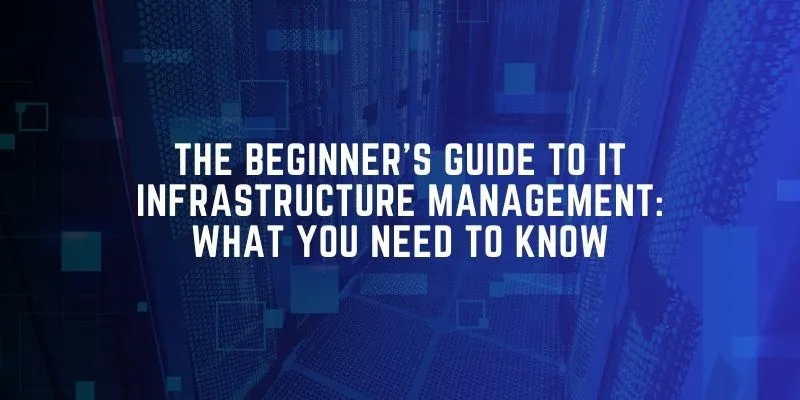The Beginner's Guide to IT Infrastructure Management: What You Need to Know

In the realm of modern business operations, IT Infrastructure Management Services stand as the cornerstone of seamless functionality and efficiency. For those uninitiated in the intricacies of this essential facet of contemporary business, understanding its fundamental concepts is paramount. This beginner's guide aims to demystify IT Infrastructure Management Services and provide a comprehensive overview of what they entail.
Understanding IT Infrastructure Management Services
IT Infrastructure Management Services encompass a spectrum of practices aimed at maintaining, optimizing, and securing the foundational components of an organization's information technology framework. From hardware such as servers, routers, and storage devices to software applications and networking protocols, every aspect of the IT infrastructure falls within the purview of management services.
IT Infrastructure Management Services involve proactive monitoring, troubleshooting, and upkeep of critical systems to ensure smooth operations. This proactive approach helps preempt potential issues, minimizing downtime and maximizing productivity. Additionally, these services encompass strategic planning to align the IT infrastructure with the organization's goals and future growth objectives.
Key Components of IT Infrastructure Management
Network Management: This aspect focuses on overseeing the organization's network infrastructure, including routers, switches, firewalls, and related components. Network management entails optimizing network performance, ensuring security, and troubleshooting connectivity issues.
Server Management: Servers form the backbone of an organization's IT infrastructure, serving various functions such as hosting websites, databases, and applications. Server management involves provisioning, configuration, maintenance, and monitoring to ensure optimal performance and availability.
Storage Management: With the exponential growth of data, effective storage management is crucial. This includes capacity planning, data backup and recovery, data deduplication, and ensuring data integrity and security.
Security Management: Protecting sensitive data and preventing unauthorized access is paramount in today's digital landscape. Security management encompasses implementing robust security measures such as firewalls, encryption, access control, and threat detection systems.
Benefits of IT Infrastructure Management Services
Improved Reliability: By proactively monitoring and maintaining critical systems, IT Infrastructure Management Services minimize the risk of unexpected downtime, ensuring reliable operations.
Enhanced Performance: Optimal configuration and tuning of IT infrastructure components lead to improved performance, enabling faster response times and better user experiences.
Cost Efficiency: While investing in IT Infrastructure Management Services incurs initial costs, the long-term benefits far outweigh the expenses. By preventing costly downtime and optimizing resource utilization, these services result in significant cost savings over time.
Scalability: As businesses grow and evolve, their IT infrastructure needs to scale accordingly. IT Infrastructure Management Services facilitate seamless scalability by providing the framework and expertise to adapt to changing requirements.
Enhanced Security: With cybersecurity threats on the rise, ensuring robust security measures is non-negotiable. IT Infrastructure Management Services help organizations stay ahead of threats by implementing best practices and leveraging advanced security technologies.
Choosing the Right IT Infrastructure Management Provider
Selecting the right provider for IT Infrastructure Management Services is crucial for maximizing the benefits and achieving organizational objectives. Consider the following factors when evaluating potential providers:
Expertise and Experience: Look for providers with a proven track record and extensive experience in managing IT infrastructure similar to your organization's requirements.
Service Offerings: Ensure that the provider offers a comprehensive suite of services that align with your specific needs, including network, server, storage, and security management.
Flexibility and Scalability: Choose a provider that can accommodate your organization's growth and evolving needs, offering scalable solutions that can adapt to changing requirements.
Security Measures: Prioritize providers with robust security protocols and compliance measures to safeguard your sensitive data and protect against cyber threats.
Cost-Effectiveness: While cost is an important consideration, prioritize value over price alone. Evaluate the overall return on investment and the long-term benefits offered by the provider's services.
Conclusion
In conclusion, IT Infrastructure Management Services play a vital role in ensuring the reliability, performance, and security of an organization's IT infrastructure. By understanding the key components, benefits, and considerations involved, businesses can make informed decisions and leverage these services to drive growth, innovation, and competitive advantage in today's digital landscape.